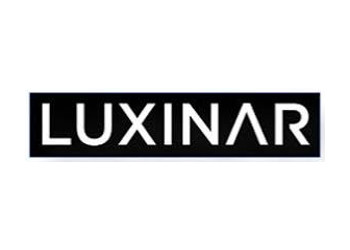
Why CO2 lasers are ideal for marking glassware?
Glassware marking serves various purposes, including decorative embellishments, product traceability, and technical surface alterations. Traditionally, glass etching involved abrasive or caustic methods, along with manual tools. However, laser marking has gained prominence, particularly in technical applications, offering a practical alternative.
The preference for CO2 lasers in glassware marking lies in their operating wavelength within the infrared spectral region. This wavelength is highly absorbed by most glass types. Practically, this means that the laser's light doesn't penetrate the glass but effectively interacts with its surface. Consequently, the laser can be utilized to mark the glass surface with varying effects, depending on the chosen method.
Understanding the CO2 laser is crucial. Invented in the early 1960s, this laser type remains widely used in various industries. The sealed CO2 laser comprises slab electrodes within a sealed tube, housing mirrors at both ends to create an optical resonator. Filled with a gas mixture containing carbon dioxide, nitrogen, and helium, the tube undergoes gas discharge when radiofrequency (RF) power is applied to the electrodes. This discharge excites gas molecules, leading to the emission of photons. These photons, bouncing back and forth within the resonator, trigger the emission of more photons upon colliding with gas molecules. Ultimately, these synchronized photons combine to form a laser beam.
To achieve precise and rapid glassware marking, a lens focuses the CO2 laser beam onto a small spot. This focused beam is then maneuvered swiftly and accurately across the glass surface using a galvanometer scanner—a mechanism comprising motorized mirrors. These mirrors effectively steer the laser beam. The marking process itself involves locally heating the glass surface to a high temperature, inducing the formation of microscopic cracks.
The laser's capabilities extend to mimicking sandblasting, creating high-quality logos and graphics. Additionally, the laser's influence on surface roughness can be harnessed to produce "head keepers" in beer glasses. These marks, strategically placed at the glass bottom, serve as nucleation sites, promoting bubble formation and sustaining a frothy head on beer for an extended period.
Marking glassware while it's still hot from the manufacturing process yields a distinct outcome. Hot glass marks exhibit smooth surfaces without microscopic cracks. The resulting marks are characterized by high quality, discreet appearance, and excellent clarity for fine details like Data Matrix codes. In applications such as the pharmaceutical industry, automating the laser marking process allows manufacturers to assign unique codes to each vessel, syringe, or vial without the risk of human error. Laser marks on glass are permanent and resistant to removal, smudging, or alteration, addressing security concerns and bolstering traceability in various industries.
Laser marking instruments from Luxinar
Luxinar applications engineers have expertise in working with glass for a range of different industry sectors. Luxinar has installed over 20,000 laser systems worldwide.
If you’re looking for a CO2 laser system for glassware etching, MULTISCAN® range provides the perfect solution.
MULTISCAN® VS
The MULTISCAN® VS is a compact, fully-integrated system that can easily be moved around. It has a small footprint with reduced running costs and can be used for many applications. Key features of the VS include the 1.2m articulated arm, easy integration into existing production lines, low maintenance requirements, and the ability to mark with high precision and speed.
MULTISCAN® HE
Our other CO2 laser system is the MULTISCAN® HE, designed to be used in harsh environments where dust or liquids might impact processes. It has an IP66 rating, which means it has been suitably tested against these harsh conditions. The HE system comes with a 1.6m articulated arm and a remote display and keyboard for easy process monitoring.
If you’re looking for the right system for your glassware marking applications, we’re ready to help you., please Contact us for more information.

Date
01 February 2024Tags
LuxinarHeard on the Internet
Imagination is more important than knowledge.
Albert Einstein






